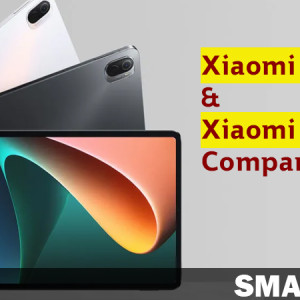Account Login
- Home
- Mobiles
-
- News
-
All news
Latest news

Nov 08, 2025 /
realme UI 7.0 Official with Android 16 and Smarter AI

Nov 08, 2025 /
12 Xiaomi Phones Testing HyperOS 3 on Android 15

Oct 23, 2025 /
Nubia Z80 Ultra Launches with Snapdragon 8 Elite Gen 5 Power

Oct 22, 2025 /
HarmonyOS 6 Public Beta: Full Device List and New Features

Oct 20, 2025 /
Honor Robot Phone with Fold-Out Camera Teased for 2026
-
- Reviews
-
All reviews
Latest reviews

Jun 14, 2024 /
FreeYond M5A : A New Name in Budget Mobile

Apr 23, 2023 /
Xiaomi Pad 6 vs Xiaomi Pad 6 Pro Comparison
-
- Other
- Contact Us
Top 10 Smartphones
| Device | Total hits | ||
|---|---|---|---|
| 1 |
| 29968 | 2 |
| 25602 | 3 |
| 25459 | 4 |
| 23449 | 5 |
| 21882 | 6 |
| 21803 | 7 |
| 20810 | 8 |
| 20803 | 9 |
| 20159 | 10 |
| 20053 |
Best Ratings
Latest News
Latest Reviews
Sony Xperia Flagship Production Moves to OEMs | What It Means for the Brand
Jun 02, 2025 Chathura Prabhaswara Gamage News 2493 hits

Sony Xperia Flagship Production Moves to OEMs – What It Means for the Brand
Sony may no longer be a dominant name in the global smartphone market, but the brand continues to develop and release high-quality Xperia models each year. While competitors like HTC and LG have exited the scene, Sony remains persistent, especially in delivering top-tier camera technology through its smartphones.
However, the company is now making strategic changes to reduce costs in its mobile division. According to recent reports, Sony is shifting the production of its flagship Xperia smartphones to third-party original equipment manufacturers (OEMs). This move marks a significant change in its manufacturing strategy, previously limited to its mid-range devices.
Why Sony Is Outsourcing Xperia Smartphone Manufacturing
As per a Japanese news outlet, Sony has decided to end all in-house production of smartphones in its factories located in Thailand and China. Historically, three facilities were involved in building Sony smartphones, but none are currently listed for smartphone manufacturing.
This signals a long-term plan where Sony Xperia flagship devices will be manufactured externally. However, Sony will still retain full control over the design, hardware specifications, and software features, ensuring that the Xperia experience remains consistent for users.
Xperia 1 VII: First Flagship Produced by an OEM
The latest flagship model, Xperia 1 VII, is reportedly the first premium Sony phone built by a third-party manufacturer. Despite this shift, there are no significant compromises in quality, performance, or design. The device still reflects Sony’s commitment to excellence, especially in areas like display technology and advanced camera capabilities.
Sony Xperia's Role in the Android Ecosystem
Although Sony is not the most popular Android smartphone brand globally, it remains respected for its superior camera sensors, many of which are used by leading phone brands. Sony’s camera innovations continue to give it a niche edge in a highly competitive market dominated by Chinese smartphone brands.
This strategic move to partner with OEMs will likely allow Sony to streamline operations, reduce production costs, and possibly invest more in research and development for future Xperia models.
As the smartphone industry evolves, Sony's adaptability could be key to its continued relevance. Outsourcing manufacturing while maintaining in-house design and innovation may prove to be a smart strategy moving forward.






























Leave a comment: